Review: ZTE Max XL for Boost Mobile
May 9, 2017, 12:45 PM by Eric M. Zeman
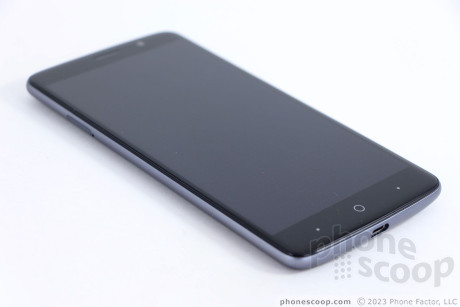
ZTE's latest slab for Boost Mobile is the monstrous Max XL. It boasts a 6-inch screen, 3,990mAh battery, and the latest build of Android 7 Nougat from Google. The ZTE Max XL is a budget smartphone for big-screen lovers in the pre-paid space. Here is Phonescoop's in-depth review.
Hardware
Is It Your Type?
The ZTE Max XL offers a huge screen, a huge battery, and Android 7 Nougat in an affordable package for Boost Mobile. If you like big phones, the Max XL is about as big as they get. If you're on a budget, the Max XL is priced right for just about anyone.
Body
ZTE has been on a roll lately. Over the course of the last year the company has churned out perhaps a dozen big-screened, budget-friendly handsets for the likes of Boost, Cricket, and MetroPCS. It may be a little hard to differentiate between the Max +, the Grand X 4, the ZMax Pro, and others, but each delivers a lot of bang for the buck. The Max XL is latest from ZTE to join this family.
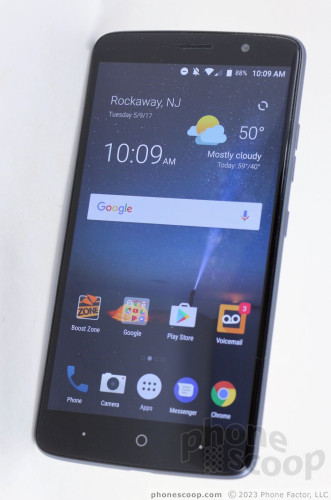
The Max XL is conservative thanks to the black and gray colors, and the shape borders on the generic thanks to its bowed top and bottom edges, and blandly curved rear. The glass front and plastic rear are held together by a polycarbonate frame. A couple flashes of chrome help break up the rear panel, but the front is pure black. ZTE didn't do much to help the phone stand out from the crowd.
The Max XL is about as big as a modern phone can be before we start calling it a tablet. With a 6-inch screen, the XL is simply gigantic. It stands tall at 6.5 inches and wide at 3.3 inches. The phone is fairly thick and heavy, too; I'd call it a bit unwieldy at times. Unless you're an NBA all-star, the Max XL is a two-handed phone for sure. My thumb can comfortably reach only about 40% of the screen when I hold the phone with one hand. The phone fit in my jeans, but just barely. If you have small or tight pockets you might be out of luck. Maybe ZTE should have called it the Max XXL instead.
There was a time when inexpensive handsets were made of cheap, garbage-y materials. Thankfully those days are largely behind us. The Max XL's glass platter has a great feel to it and imbues a sense of quality. The polycarbonate frame is no substitute for aluminum, but it's strong all the same. The rear panel, buttons, and other components are all assembled to the frame snugly. I have no complaints about the fit and finish of this phone. It's truly a fine phone considering the price.
Like many modern phones, the Max XL makes use of 2.5D curved glass. This means the edges of the front panel are rounded where they meet the outer frame of the phone. It's a good look for the XL, and ZTE pulled it off well. The majority of the phone's face is pure black. Only a few functional elements break things up. You'll easily spot the mesh grille covering the earpiece and the user-facing camera above the screen. ZTE placed its traditional dot-button configuration below the display. The capacitive home button is a small circle, while the back and app switcher keys are even smaller dots to either side. The buttons work fine. I wish the bezels surrounding the screen were a hair smaller.
The SIM card tray is slotted into the left edge of the Max XL. The tray also holds microSD memory cards. The screen lock and volume buttons are on the right edge. I like the profile and texture of the screen lock button, which is positioned about in the middle. It's a snap to find and use, and the travel & feedback is quite good. The volume buttons have about the same shape and profile as the screen lock button, but with a smooth texture. I had no trouble using them. A standard headphone jack is available on the phone's top edge, and a USB-C port is located on the bottom edge.
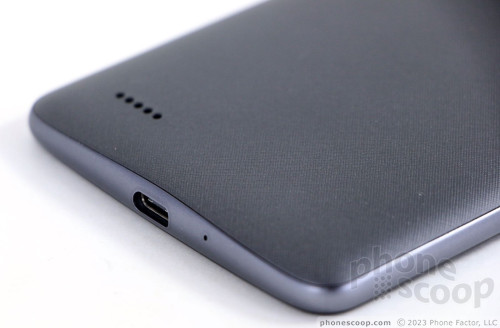
The most unique aspect of the Max XL's design is the rear panel, which has a very unique cross-hatched pattern and texture. I can't say the texture adds any functionality to the phone, like some extra grip, but it feels good all the same. The camera module and fingerprint reader are separated by the LED flash. The arrangement looks a bit like two small planets fighting over a shared moon. The camera protrudes a bit from the rear surface, while the fingerprint reader is indented a bit. That makes it easy to tell the two apart. The rear panel does not come off and the phone isn't rugged nor water resistant.
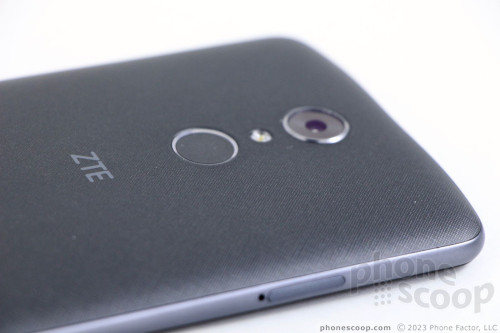
ZTE's Max XL may be a bit short on sex appeal, but it is a perfectly functional and well-made piece of hardware.
Screen
Why is the Max XL called the Max XL? The 6-inch full HD screen, of course. A good number of today's phones have screens that fall between 5.0 and 5.7 inches. Pushing that extra 0.3 inches gives the Max XL an enormous canvas for games, videos, photos, and other media. The full HD resolution delivers enough pixels so the LCD screen is sharp and clean. (You can sometimes see individual pixels if you hold the phone very close to your eyes.) Colors look good, and brightness is solid. The glass is lacking an oleophobic coating to resist fingerprints, so it often becomes gunked up and mired with grime. This is most vexsome when outdoors, as it creates a nasty glare. You'll find yourself wiping the phone's display on your pants often to rid it of the schmears. Even then, outdoor viewability isn't the best. But it's a fine screen for this class of phone.
Signal
Boost Mobile is one of Sprint's prepaid brands and so the ZTE Max XL operates on Sprint's CDMA/LTE network. Sprint's marketing materials for the phone specifically call out the Max XL's 2x20 Carrier Aggregation feature, which means it is compatible with speedier (but not the speediest) service from Sprint. Moreover, it supports HPUE in Sprint's 2.5GHz spectrum, which should translate to stronger, faster performance on Sprint's high-band airwaves (particularly at the cell edge). The phone delivered peak downloads of 31.5 Mbps and peak uploads of 14.5 Mbps. That's fast for a phone on a prepaid network (because they are often speed-capped).
I had no trouble using the Max XL all over New Jersey over the course of several days. The phone always remained on LTE 4G and delivered quick performance. Web sites and app content updated in a blink, and media-intensive social networks flowed seamlessly. Streaming Netflix over LTE worked just fine, as did listening to music through Google Play Music.
Phones connected on the first call, and the phone didn't drop any calls, even at highway speeds.
Sound
I'd rate the Max XL as a decent voice phone. It could be better. The earpiece pumps out a decent amount of volume and allows you to hear calls in most places without issue. Clarity is another story. Voices often come through the earpiece garbled and distorted. The distortion is noticeably worse if you crank up the volume. People I spoke to through the Max XL said I sounded just okay.
You might get more mileage out of the speakerphone. It, too, distorts when you crank it all the way up, and yet the huge amount of sound that projects from the rear-mounted speaker ensures you'll hear it. The speakerphone is best used on a hard, flat surface such as a desk or table.
Ringers and alerts are extremely loud. I always heard the XL when it rang. The vibrate alert is strong.
Battery
ZTE made use of the Max XL's roomy chassis to install a 3,990 mAh battery. Few batteries are this big, and few provide as much battery life. The Max XL handily coasted through two days at a time on a single charge. Despite the large display, the Max XL really impressed me with power to spare.
The phone includes only the standard Android battery-saving tool. My guess is most people won't ever need to use it.
If you use the included charger the Max XL will power up rapidly thanks to support for Quick Charge 2.0. It can boost capacity by about 40% after a quick 30-minute charge, which is more than enough to get you through an evening out.
Bluetooth, GPS, NFC, WiFi
I managed to get only so-so performance out of the XL's secondary radios.
The Bluetooth radio supports connections to phones, accessories, PCs, and cars. Connecting to accessories such as headsets was no problem, but the phone gave me a lot of trouble connecting to my car for some reason.
Call quality via headsets was just okay, and quality through my car was a lot worse. Music sounded decent through a good speaker, but I wasn't blown away.
The GPS radio did not impress. Google Maps always located me quickly, but the app itself ran slowly and was practically useless for real-time navigation. Accuracy was never better than about 30 feet.
The Max XL doesn't have NFC. I didn't run into any issues with the WiFi.
Software
Lock Screen
The Max XL's lock screen helps you manage incoming notifications like most other Android phones. It includes a version of the now-common "always on" display, but it is turned off by default and buried deep in the settings menu. In fact, I only discovered it by accident. When turned on, it will briefly flash incoming notifications on the lock screen.
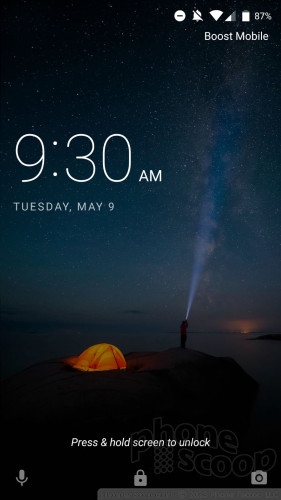
Press the home or lock button to wake the display, and see the clock and notifications. The lock screen provides a large clock in the upper-right corner, but it's hard to read (especially outdoors). Notifications are broken down by app and listed in chronological order underneath the time/date. As always, you can adjust the privacy of notifications.
The Max XL offers PIN, pattern, password, or fingerprint options for securing the phone. Training several fingerprints is a breeze and I found the reader was typically fast enough for unlocking the phone. The Max XL also supports the Android Smart Lock function, which will keep the device unlocked when it senses trusted devices, locations, and voices. These all worked as they should.
The lock screen provides shortcuts to the camera and Google voice search. You cannot customize these.
Home Screen
The Max XL runs Android 7.1 Nougat with a light user interface from ZTE and Boost.
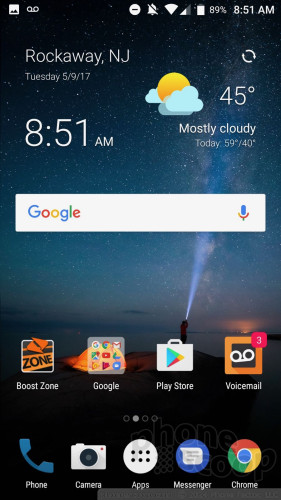
The home screen panels and app drawer function as on any standard Android handset. Three home screen panels are active out of the box, and Boost Mobile has slathered them with all sorts of folders and such. As per the norm, these can be customized however you wish. The app drawer, settings menu, and Quick Settings shade are all stock Android, which I appreciate.
By default, the capacitive keys below the screen are back, home, and multitask, but you can swap back and multitask if you're used to the Samsung layout. I like that you can adjust the size of the fonts and on-screen elements to make use of all the screen real estate. There are several pre-installed themes, and you can download more from Boost Mobile if you so desire.
The Max XL has a Snapdragon 435 processor under the hood. This chip falls toward the lower end of Qualcomm's processor lineup. Still, this 1.4 GHz octa-core engine with 2 GB of RAM does an admirable job keeping the Max XL moving smoothly. Performance was quick most of the time. I didn't see any major issues when jumping from screen to screen, switching to other apps, or playing games.
Camera
The quickest way to open the camera is by double-tapping the screen lock button (as long as you activate this feature.) You can also use the lock screen shortcut or the standard camera app icon on the home screens. The camera opens quickly enough.
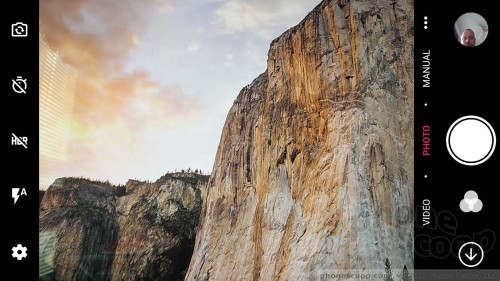
The viewfinder includes a handful of toggles for some features (settings, HDR, timer, flash, camera switcher) on the left. The Max XL has six shooting modes: auto, video, manual, panorama, time-lapse, and multi-exposure. The first three are available directly from the viewfinder, while the latter three must be accessed through a secondary menu. Most of these modes are self-explanatory.
The multi-exposure mode — which is common to ZTE phones — allows you to take two pictures and overlay them in a handful of different ways to create a single image. Putting this mode to effective use takes practice.
The manual mode is great for people who want to take a little more control. It allows you to adjust shutter speed (up to 80 seconds!), white balance, ISO, exposure, and focus. The manual mode includes an always-on visual tool to help ensure the shot is level, and lets you lock focus and exposure if you want.
The camera's settings are a cinch to use thanks to the simple and straightforward design.
The selfie camera includes a brightness slider, but not a beautification tool. The selfie cam also has a smile-trigger setting and a screen-based flash.
The Max XL's camera offers a lot of shooting modes and is relatively straight-forward to use. Most people will figure it out in a snap. The camera app runs quickly.
Photos/Video
The Max XL's main camera has a 13-megapixel sensor. It's aided by the flash. I thought most pictures I took with the Max XL were decent, but they didn't bowl me over. Focus, white balance, and exposure were typically good, though there were plenty of unusable shots. Most people should get usable photos the majority of the time. I did see a bit of grain in low-light images, but it wasn't too bad. The flash does well with exposure when you're shooting at close distances. Pictures shot in bright sunlight or evenly overcast skies were best.
The 5-megapixel selfie cam does a pretty good job. The smile-capture tool works really well, as does the selfie flash. Focus is a bit soft and images did tend to be somewhat grainy.
The Max XL's full HD video camera shoots clean, well-exposed video.
I wouldn't use the Max XL for vacations or important life events, but it's passable as an everyday camera.
Wrap-Up

The ZTE Max XL isn't the world's most attractive nor most powerful smartphone, but it does do a few things really well.
If all you want is a big screen with a big battery attached to it, the Max XL has you covered in spades. The full HD display gets the job done, though I wish it were protected from fingerprints. The battery pushes the Max XL through two full days of use, which should be enough for any/everyone. Data speeds are quick, but voice quality was middling at best.
The Android 7 Nougat operating system has a refreshingly light skin from ZTE and runs smoothly on ZTE's hardware. The camera app has just enough features to keep creative shooters shooting, and the sensor produces fine images.
What makes the ZTE Max XL even more attractive? The $99 price point. This phone performs on par with phones that cost nearly twice as much. It's a bargain for Boost Mobile customers that's not to be missed.
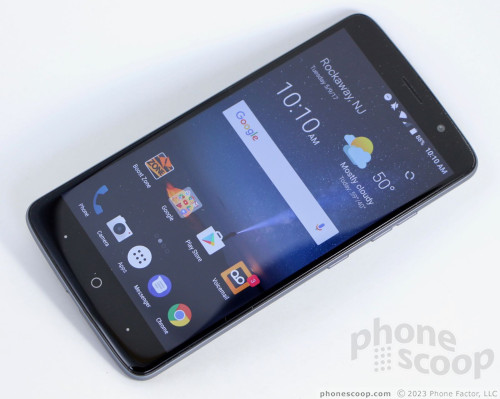
Comments
No messages


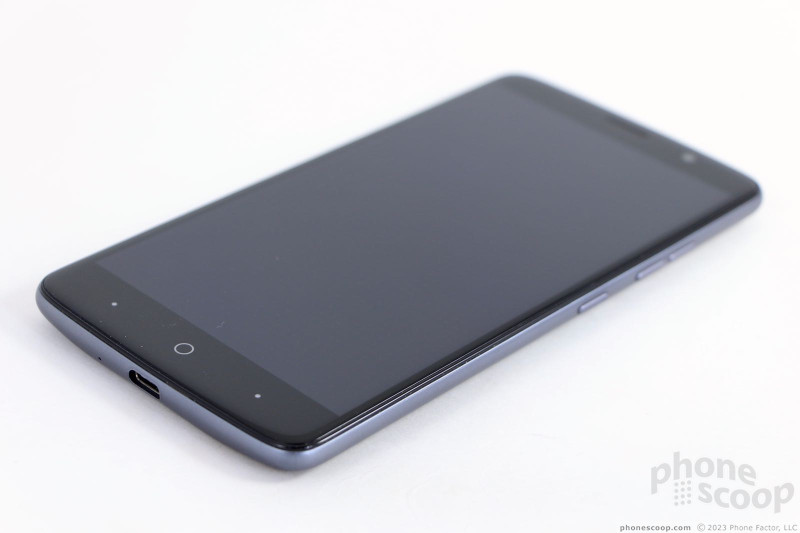










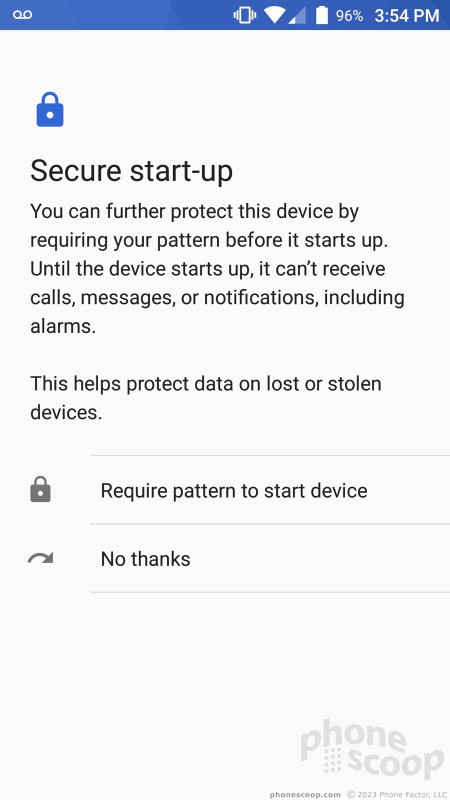




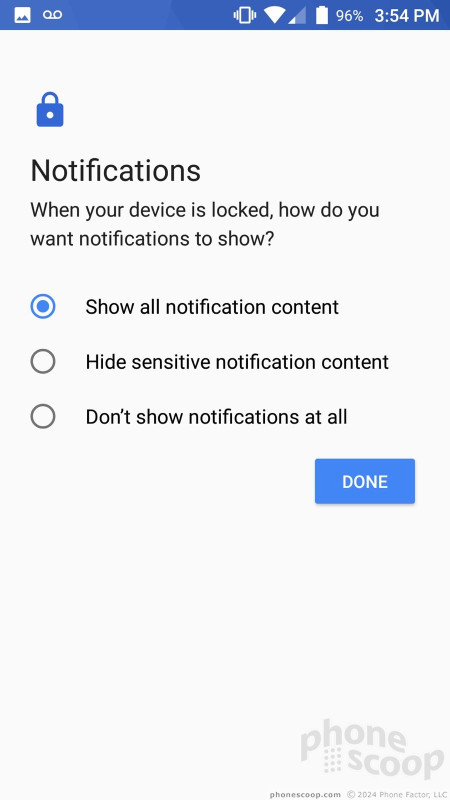





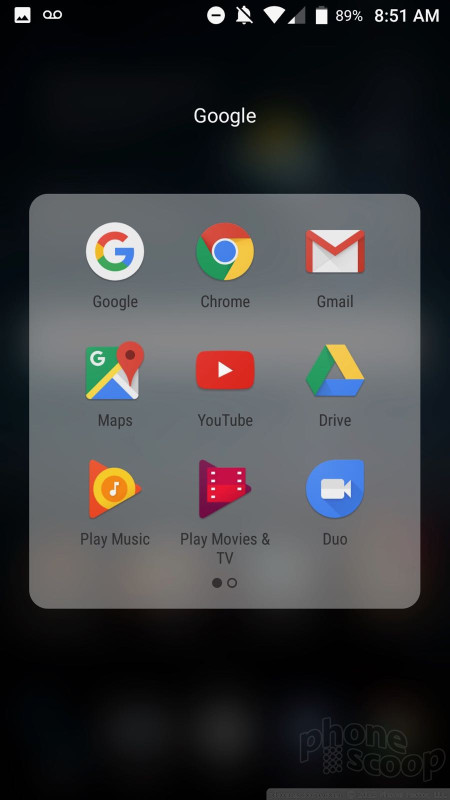





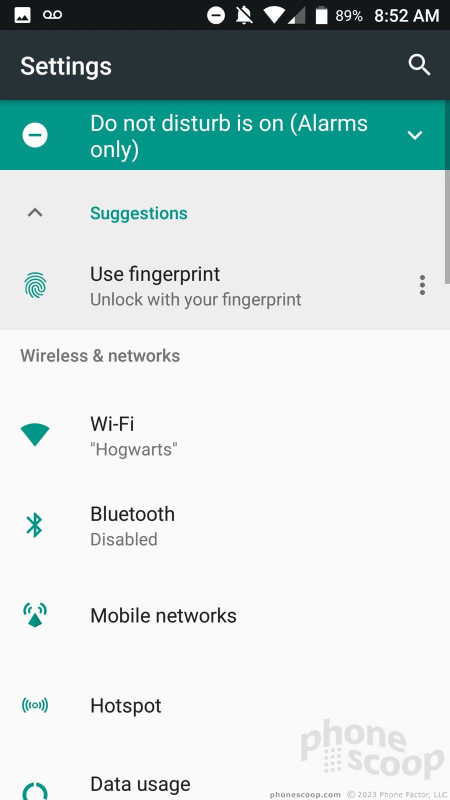








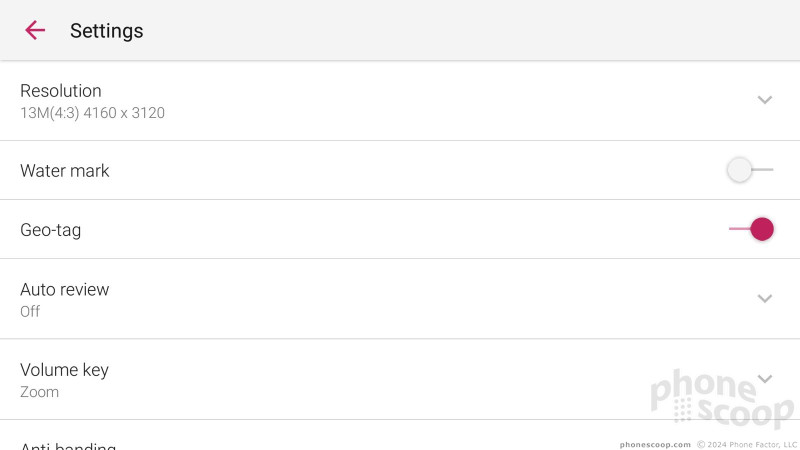
























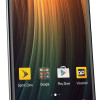 Sprint to Sell ZTE Max XL
Sprint to Sell ZTE Max XL
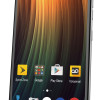 ZTE Max XL Packs 6-Inch Full HD Screen for $130
ZTE Max XL Packs 6-Inch Full HD Screen for $130
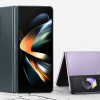 Samsung Refines its Foldable Phones
Samsung Refines its Foldable Phones
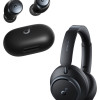 SoundCore Debuts new Space Series
SoundCore Debuts new Space Series
 iPhone 14 Plus Offers a Big Screen For Less
iPhone 14 Plus Offers a Big Screen For Less
 ZTE Max XL
ZTE Max XL





